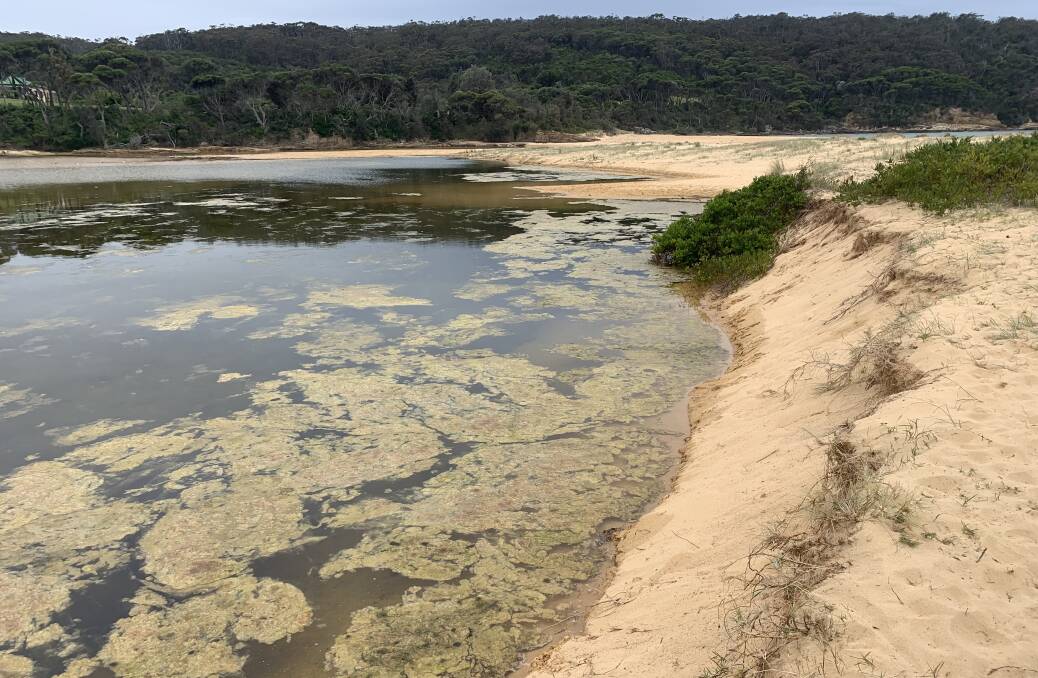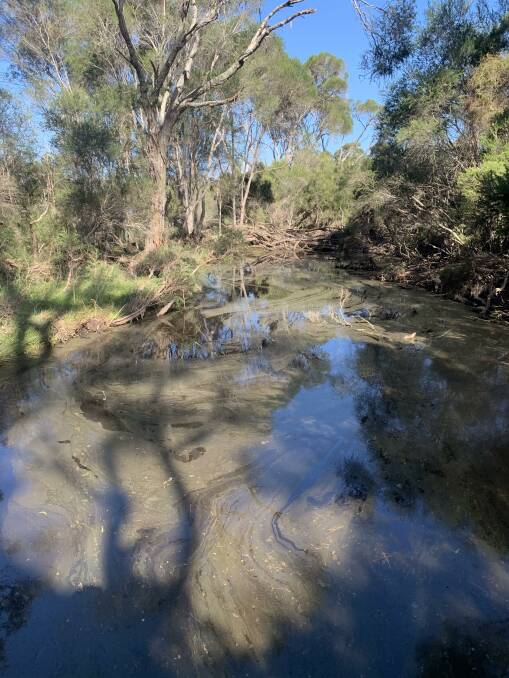While recent heavy rains can cause a welcome flush out of our coastal lakes, they can also bring the hazard of polluted runoff.
Subscribe now for unlimited access.
or signup to continue reading

In the past week both Merimbula Lake and Lake Curalo in Eden have seen inflows of pollutants including urban and industrial estate runoff, and sewer station overflows.
While Merimbula Lake is permanently open to the ocean, the unwelcome situation is relatively shortlived. The council recommended avoiding water based activities for three days from the end of the rain event.
However, for Lake Curalo - an ICOLL - the outcome is not so cut and dry.
Curalo is one of a number of "intermittent closed and open lakes and lagoons" in the Bega Valley Shire and one that has been the subject of plenty of resident concerns in recent years.
Photos submitted to Australian Community Media this week showed the continuing presence of algal blooms, murky water and potentially hazardous pollutants in Curalo's feeder streams. They also showed how clear and enjoyable the lake can be in better times, such as when it gets regular tidal flushes.

BVSC coastal management officer Rachel Duczynski said when estuary entrances are open, there was greater potential for flushing via tidal movements, "however the key to improving water quality long term relies on management of activities and issues within the catchment".
Ms Duczynski said following heavy rainfall, sediment, pollutants and debris can be washed into waterways from within the catchment area.
"This is particularly valid in urban catchments with greater disturbance, however runoff from agricultural areas and bushfire impacted areas can also affect water quality," Ms Duczynski said.
"Based on this, council always recommends that recreation in waterways and at estuary entrances should be avoided for a minimum of three days following heavy rainfall.
"Last week's heavy rain led to an influx of pollutants finding their way into Lake Curalo," she said.
"This included catchment runoff from urban and industrial areas as well as an overflow from a sewer pump station caused by domestic stormwater inundation."
The same issue of domestic stormwater inundation of sere pump stations was said to be the cause of council's advice at Merimbula Lake as well.
Council manager of water and sewerage services Chris Best said properties with stormwater illegally connected to council's sewerage system are the root cause of sewage overflows during heavy rain.
"This significantly increases the flow of water and sewage through the system, resulting in overflows at pump station inspection points," Mr Best said.
"Council regularly tests in residential areas by filling the sewerage system with smoke. If smoke is seen escaping from household downpipes, then an illegal connection is identified and action with the homeowner is taken."
Ms Duczynski said that upon discovering the overflow at Lake Curalo, the NSW EPA were notified along with all stakeholders.
"We also made the decision to open the lake entrance when the water level reached a trigger height of 1.2m in line with the Entrance Management Policy, this was done to alleviate inundation of low lying assets around the lake.
Lake Curalo had previously been opened in mid-2020 after a similar rain event - that was believed to be the first time the lake had been open to the ocean since 2016.
"A Coastal Management Program (CMP) for Lake Curalo is being developed and is due for completion in mid-2022," Ms Duczynski said
"The local community and stakeholders have been involved in this process to date, and the broader community will have an opportunity to review and comment on the CMP when it goes on public exhibition within the next six months.
"The CMP will identify threats and pressures within the catchment impacting on the values of the lake-including catchment runoff and urban pollutants, stormwater infrastructure and drainage, and degradation of vegetation - and set out management actions to address these.
Ms Duczynski said various works around Lake Curalo had been completed over the last few years in line with previous estuary management plans, "with the CMP to open up greater funding opportunities to complete additional actions".
She said regular sub-catchment water quality testing results would be incorporated into the CMP to reduce nutrient and sediment inputs through strategic on-ground works.


